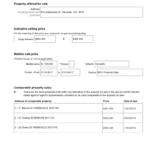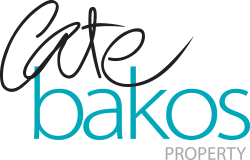Like no other real estate topic, this one gets hearts pumping and sometimes tempers frayed.
So many people misunderstand the legal rules though, and in particular the relationship between the three. This is understandable, particularly given we’ve had recent changes to our Victorian legislation around how agencies can represent a price expectation on a property listing.
Under-quoting has been problematic for buyers for years and despite fines and attention from Consumer Affairs in the past years, outlawing the practice was one of the biggest challenges our industry faced. Many would argue that there are multiple reasons for this being a difficult task to tackle, some of the reasons including (but not limited to):
– A moving market that is capable of ‘setting a new record’ every Auction Saturday,
– A vendor who changes their mind or decides to increase their sale price expectation on the day
– A market ‘expects’ to add a 10-15% surcharge onto the quoted price (hence, the “if everyone is doing it, we must do it” mentality applies)
– A genuinely fierce auction battle produces a price tag well in excess of market expectations.
The reality is that the practice was/is a result of a legal process that enables a Vendor to set their reserve on the morning of the auction, irrespective of what was quoted, what they were told by their agent to anticipate, and whatever comparable sales were cited.
I would call this a loophole.
In a desperate attempt to curb the practice (which was formerly adopted with requirement for the quoted price guide to range only ten per cent and to be realistic), Consumer Affairs introduced some changes.
In the years leading up to this, ‘realistic’ price quoting had became very blurry and the attempts from our regulators were feeble at best. They had only hand picked a small percentage of campaigns that were determined to have misled and deceived the public. Furious outcries from bidders at auction when bidding levels had well and truly surpassed the quoted range were becoming problematic for agents and agencies once the Consumer Affairs spotlight sharpened it’s reach and significant agency fines have been making news headlines in greater numbers since 2014.
Remaining focused on how the quoting now works is really important for buyers, because the days of “just add another ten per cent” are gone.
Every agency, every campaign and every outcome are not as predictable.

 Take this example property in Yarraville Village that we secured for a client on Wednesday under auction conditions. The agents had quoted the property as $850,00 – $900,000. After careful discussion with the agents we recommended to our clients that we put in a pre-auction offer at the top of the range. We secured the property for $900,000.
Take this example property in Yarraville Village that we secured for a client on Wednesday under auction conditions. The agents had quoted the property as $850,00 – $900,000. After careful discussion with the agents we recommended to our clients that we put in a pre-auction offer at the top of the range. We secured the property for $900,000.
The vendor’s reserve was within the quote range.
 This four bedroom house in Ardeer was an auction we attended for a client last month. Quoted at $580,000-630,000, the Vendor set a reserve on the day of $650,000. Many hopeful bidders had their hearts broken at this auction and obviously two people had decided that a four bedroom, mid century brick home overlooking the park in Ardeer was worth fighting for. The property sold for $740,000 and not to our client.
This four bedroom house in Ardeer was an auction we attended for a client last month. Quoted at $580,000-630,000, the Vendor set a reserve on the day of $650,000. Many hopeful bidders had their hearts broken at this auction and obviously two people had decided that a four bedroom, mid century brick home overlooking the park in Ardeer was worth fighting for. The property sold for $740,000 and not to our client.
Each example highlights the dramatic differences between quote range and reserve price we face these days.
 Two years ago our regulator implemented a change to our quoting regime. A Statement of Information must be provided if a specified price is not. For auction campaigns, ‘Set Sales’ and other competitive buyer sale processes, agency listings will be accompanied by this statement. It must feature three comparable sales and the quoted price must take into account these sales results.
Two years ago our regulator implemented a change to our quoting regime. A Statement of Information must be provided if a specified price is not. For auction campaigns, ‘Set Sales’ and other competitive buyer sale processes, agency listings will be accompanied by this statement. It must feature three comparable sales and the quoted price must take into account these sales results.
What is now our present challenge is determining not only whether the three comparable sales are actually representative as comparable, and if so, whether they were anomaly results (or low results for a reason).
For example, one recent result that raced past the Agent’s suggested quote range and comparable sales figures did so because the comparable sales were completely inferior, but not obviously so to the general public. One property was a wreck internally (and difficult for anyone to find online even if they tried to check it), one was zoned in an Industrial Zone (very difficult to obtain finance for) and one was on considerably less land.
Of course the subject property sold at a much higher price.
While it could be argued that the agent wasn’t being fair with the chosen comparable sales, Consumer Affairs Victoria would have to research not one but three other property prices to determine whether the agent selected fairly. That is indeed a lot more rigour now and some argue whether the changes are an improvement.
Buyers who feel disheartened by a property price exceeding an agent’s quoted range may have failed doing some important homework. Firstly, working on their own comparable sales is a clever step. If they’ve been watching the market and canvasing a particular genre of dwellings in a given suburb for long enough, they will have as much comparable sales intel as the agents.
Secondly, buyers need to remember that a Vendor can set a reserve price as late as auction day. Agents may be surprised by the reserve or they may not, but the choice is that of the Vendor’s.
Setting a reserve figure is Vendor’s prerogative.
When agents accurately and honestly appraise a property, complete a fair Statement of Information and quote the property accordingly (and as stated on the Sales Authority), they are considered to have fulfilled the marketing aspect of the role.
If on auction day their Vendor’s expectation comes as a massive shock, some could argue the they haven’t managed the communication well but the agent isn’t always to blame.

I believe that the loophole sits with our legal documentation and the lack of requirement for a Vendor to nominate a reserve as soon as the property is marketed is problematic.
A vendor reserves the right to change their reserve, for sure. But it should then be publicly reflected.
Wouldn’t that be novel? A stated reserve or a standardised and reliable quoted range.
Until such time, we cannot underestimate the value of doing our own homework.
You can find further information here.
